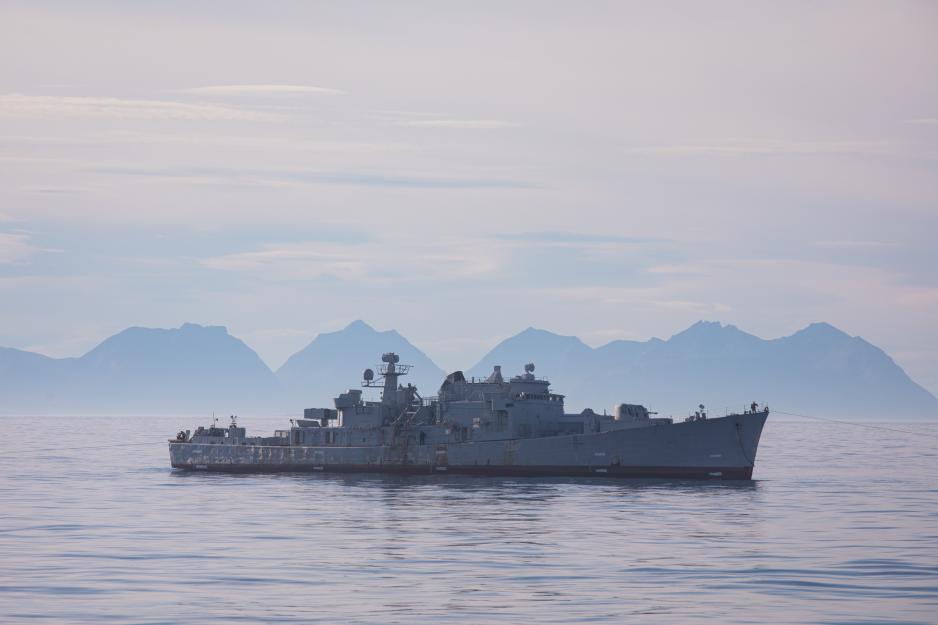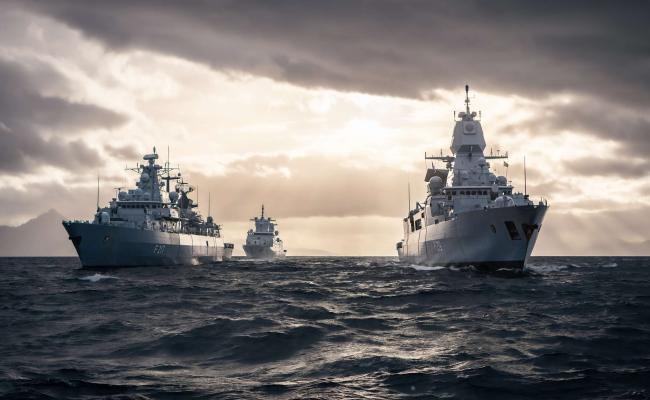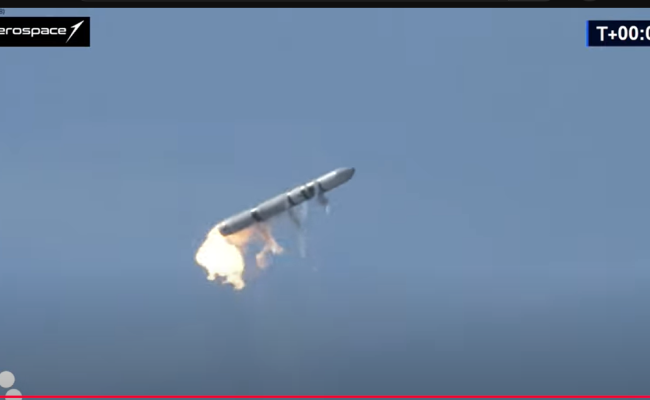Sinking of Two Frigates by Norwegian Navy Sparks Strong Reactions

KNM Uthaug sinks the decommissioned frigate KNM Trondheim. (Screenshot of video from the Norwegian Armed Forces)
In September, the Norwegian Armed Forces sank two old frigates off the coast of Northern Norway in connection with a NATO exercise. Fishers and nature conservationists have reacted strongly to the incident.
In September, the Norwegian Armed Forces blew up and sank two decommissioned frigates, KNM Trondheim and KNM Bergen, off Andøya in Northern Norway during the NATO exercise Ægir.
Details surrounding the incident were first reported by Kyst og Fjord, including the position of the wreck of KNM Bergen, and that the Directorate of Fisheries had previously pointed out a possible conflict with fisheries in the area in question.
The incident has sparked strong reactions from Friends of the Earth Norway and the fisher's interest organisations, Fiskebåt and Nord Fiskarlag.
The reactions concern the fact that one of the frigates, KNM Bergen, was sunk in an area where there is significant fishing activity, and that the wrecks will not be removed.
KNM Trondheim was sunk by a torpedo from a Norwegian submarine and is at 2200 meters outside the island of Senja. KNM Bergen was sunk by the new precision weapon Quicksink, which was dropped by an American B2 bomber, and is located outside of Gryllefjord at a depth of approximately 125 meters.
Also read (article continues below)
In the middle of a fishing ground
Fiskebåt, the interest and employer organisation for the ocean-going fishing fleet, writes in a letter to the Norwegian Ministry of Defense that they are "very surprised that the Armed Forces has chosen to test weapons and sink the decommissioned frigate KNM Bergen in an important fishing ground. For nets, long-line seine fisheries, these are very important areas that are not considerably disturbed."
The organisation is reacting to not being contacted by the Armed Forces before the sinking and is now demanding that the wrecks be removed. They say that the wreck could lead to lost or destroyed fishing equipment.
The Norwegian Fisher's Association has also reacted to the incident.
"This is not good in terms of marine pollution," says the leader of the association's department in the North, Hanne Fagertun, to NRK.
Recently, the association demanded a meeting with two ministers about the incident. In a letter to the Ministry of Defense and the Ministry of Trade, Industry and Fisheries, they write:
"Continued fisheries could lead to loss of equipment and 'ghost fishing'. Ultimately, it can also become a threat to the life and health of those who operate in the area. If it is not cleaned up, this important fishing ground will be largely taken out of use. This would also affect land-based industries and coastal communities."
Artificial reefs
The Armed Forces say the wrecks will function as artificial reefs on the seabed. Artificial reefs are human-made underwater structures that are usually constructed to promote marine life in areas on the seabed that have little growth and activity.
The statement has led to reactions from Friends of the Earth Norway.
"This is not how international environmental agreements work. Establishing artifical reefs must be done in the right place and for the right reasons," says Truls Gulowsen of Friends of the Earth Norway to NRK.

The Head of Research at the Norwegian Institute of Marine Research, Frode Vikebø. (Photo: Institute of Marine Research)
The Head of Research at the Norwegian Institute of Marine Research, Frode Vikebø, says to High North News that ocean areas are under pressure and that they are limited.
"Restoration through the placement of artificial reefs, for example, is done where there is a need and after an extensive assessment of how it will affect the nature," he says.
He also says that there should at least be assessments regarding whether there is a need for reefs in the area, if they are meant to restore something, and whether measures would disturb the nature already present at the location and the surrounding areas.

The sinking of the frigate KNM Bergen in particular has caused reactions. The wreck lies at a depth of 125 meters in a fishing ground between Andøya and Senja. (Photo: the Norwegian Armed Forces)
Marine geoengineering
Frode Vikebø also says that leaving the wrecks on the seabed as artificial reefs can be classified as marine geoengineering.
Marine geoengineering typically involves placing substances from aircraft or ships in the sea or placing structures in the sea. The purpose will often have to do with climate considerations, but also, for example, related considerations such as counteracting ocean acidification. Such measures can have harmful environmental effects.
A consultation was recently sent out regarding a proposal to amend the Pollution Act, Section 3, and the Pollution Regulations, Chapters 21 and 22.
The legislative amendment essentially entails that marine engineering measures will be prohibited. The consultation responses show that this is supported by, among others, Fiskebåt, the Norwegian Fishermen's Association, the Institute of Marine Research and the Norwegian Armed Forces.
No consultation
An NRK article about the incident says that the wrecks were sunk at great depths that, according to the Institute of Marine Research, are free of corals and do not have a vulnerable seabed environment.
However, the Institute of Marine Research has not been consulted in the matter, according to Vikebø.
"The institute received a request from the Navy in August with a request for a contact person regarding the sinking of the target vessel at the location, but there has been no further follow-up after this from any of the parties. The institute has not provided advice in this case," he says, and adds:
"The usual procedure in such cases is that the regulatory authority contacts the institute if they need further basis for their response to the Navy."




